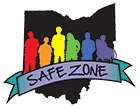- Home » Safety Planning
Safety Planning
SAFETY PLAN FOR VICTIMS OF DOMESTIC VIOLENCE
Not all of the points on this safety plan will apply to your situation. Choose the suggestions that make sense for you.
GENERAL SAFETY PLAN
- Identify ways to get out of your home safely and practice using your escape route.
- Pack a bag with medications, important papers for yourself and children, money, keys, etc. and hide it. (Consider changing the hiding spot for these items if the abuser searches your home.)
- Arrange a signal with neighbors to let them know when you need help (turning on a porch light during the day, pulling down a particular window shade).
- Devise a code word to use with your children, grandchildren, friends or others to indicate that you need the police.
- Devise a safety plan for your children which includes the following when violence occurs:
- Find a safe place in your house away from the violence.
- Never try to stop the fight because you could get hurt.
- Call 911 for help.Tell the operator where you are, your address and what is happening in your house.
- Decide and plan where you will go if you have to leave (even if you don't think you will need to).
SAFETY IN EXPLOSIVE INCIDENTS
- Try to go to a room or area with access to an exit. Avoid rooms that don't have outside doors and those containing potential weapons (kitchen, bathroom, bedroom, garage).
- Try to stay in a room with a phone to call 911, a friend, or neighbor.
- Inform law enforcement if weapons are in the home.
- Visualize your escape route and be prepared to use it if a safe opportunity arises.
- Use your code word or special signal to tell your children or neighbors to call 911.
- Use your instinct and judgment to safely assess what to do next.
SAFETY WHEN LEAVING
- Open a savings account in your own name at a different bank. Consider direct deposit of your paycheck or benefit check. Begin to increase your independence.
- Leave money, an extra set of keys, copies of important documents and extra clothes with someone you trust.
- Have the abuser's social security number and license plate number with you to provide to the police.
- Bring medications, prescriptions, hearing aids, glasses, etc.
- Keep the domestic violence program number with you and have some change at all times for emergency phone calls.
- If you are 60 years or older, contact Adult Protective Services to learn more about eligibility for public and private benefits and services.
SAFETY IN YOUR OWN HOME
- If you have children or other dependents living with you, discuss a safety plan for when you are not with them. Inform their school, day care, etc. in writing, about who has permission to pick them up.
- Inform neighbors and your landlord that the abuser no longer lives with you and they should call the police if they see the abuser near your home.
- Give a description of the abuser or provide photographs, if available.
SAFETY & PROTECTION ORDERS
- Keep your protection order with you at all times. If it is lost or destroyed, you can get another copy from the Clerk of Courts.
- Call the police if the abuser violates the protection order.
- Give copies ofyour protection order to anyone with whom your children may stay (school, day care, etc.).
SAFETY IN PUBLIC
- Decide who to inform of your situation (school, offie or building security), and provide a picture of the abuser. Consider having your phone calls screened.
- Devise a safety plan for when you are out in public. Have someone escort you to your car, bus or taxi. Use a variety of routes to go home and consider what you would do if something happened on your way home.
SAFETY & EMOTIONAL HEALTH
- If you have to communicate with the abuser, do so in the safest way - by phone, mail/email or in the company of another person, etc.
- Decide who you can talk to freely and who can provide the support you need. Consider calling a domestic violence hotline or attending a support group.
CHECKLIST: WHAT TO TAKE WHEN YOU LEAVE
- Driver's license or other form of ID
- Your birth certificate and those of family members
- Money, bank books, checkbooks, credit cards, ATM cards, mortgage payment book
- Social Security card, work permit, green card, passport, insurance papers, medical records
- The abuser's social security number, license plate number and photo, if possible
- Divorce papers and custody papers
- Copies of your protection order
- Lease, rental agreement, house deed
- Keys to house, car, office
- Medications, glasses/contacs, hearing aids, etc. for you and your children or other dependents
- Personal items like address/phone book, pictures, etc.
Here is a website that will give you additional information for Safety Planning: http://www.loveisrespect.org/get-help/safety-planning
COUNSELING & SUPPORTIVE SERVICES
RENEW COUNSELING & RECOVERY CENTER 330-491-1351
For Shelter Assistance Call
DVP Inc 24-Hour Hotline 330-453-SAFE (7233)




